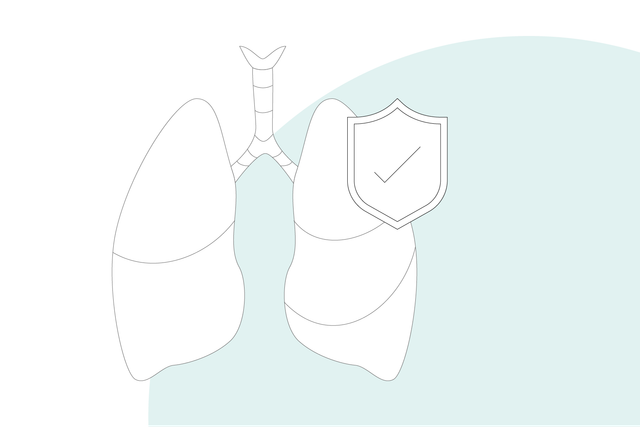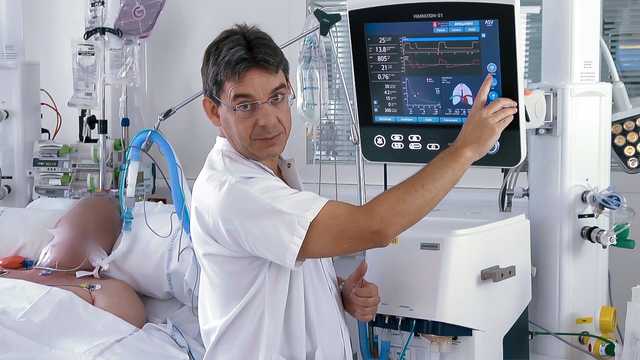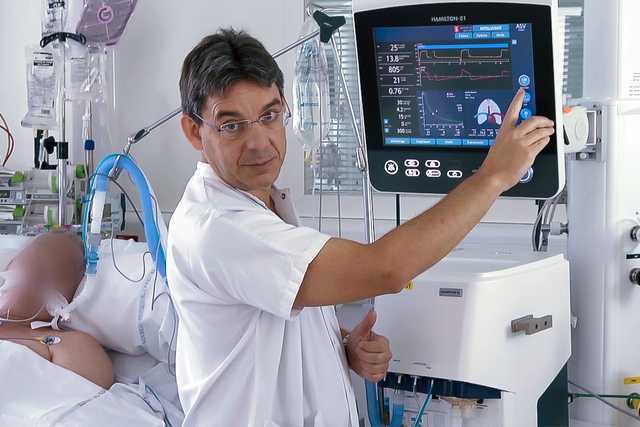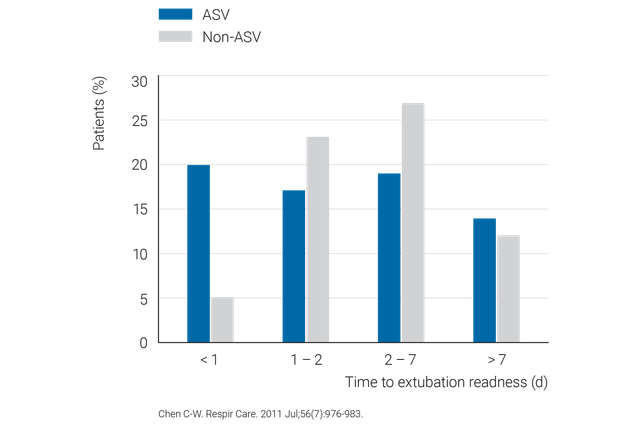
Адаптивная поддерживающая вентиляция (ASV) — это режим вентиляции, который выбирает и непрерывно регулирует значения частоты дыхания, дыхательного объема и времени вдоха в соответствии с механикой внешнего дыхания и дыхательными усилиями пациента.
Вентиляция легких круглосуточно адаптируется к каждому дыхательному циклу с момента интубации и вплоть до экстубации.

В режиме ASV автоматически применяются стратегии защиты легких, чтобы минимизировать осложнения от возникновения давления «AвтоPEEP», волютравмы или баротравмы (
В соответствии с правилами этой стратегии защиты легких режим ASV побуждает пациента дышать спонтанно (


В этом видео старший реаниматолог Жан-Мишель Арналь (Jean-Michel Arnal) кратко демонстрирует основные функции и настройки режима ASV на примере реального пациента отделения интенсивной терапии.


ASV — это стандартный режим вентиляции на всех аппаратах ИВЛ нашей компании для интенсивной терапии.